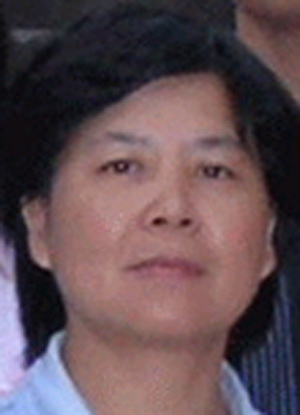Ji Wu's Lifelong Egg-Production Study Vindicated
By wchung | 06 May, 2025
A new study has confirmed Ji Wu's 2009 finding that the capacity to produce new eggs do not end at birth.
A new study has confirmed a 2009 study conducted by Ji Wu of Shanghai Jia Tong University strongly suggesting that our biology textbooks are wrong in asserting that women are born with a fixed lifetime supply of oocytes (immature egg cells) from which mature eggs can develop for fertilization.
In 2009 Ji Wu at Shanghai conceived an ingenious study to show that, in fact, the supply of eggs are replenished from female germline stem cells (FGSC) in the ovaries. To collect a supply of FGSC, which exist in ovarian tissue in low concentrations of only about 1 in 10,000 cells, Wu used a technique called immunomagnetic isolation. Tiny magnetic beads coated with an antibody latch onto a protein expressed only by FGSC and the cells are collected by a magnetic screen.
After isolating FGSCs from newborn and adult mice, Wu’s group cultured them through many cycles of division. The cells were even frozen and thawed without apparent damage. Before transplanting these cells into the ovaries of sterilized mice, the FGSC were infected with a harmless virus carrying the green fluorescent protein (GFP) gene to allow easy verification that any resulting pregnancy can be attributed to the transplanted FGSC. The female mice were mated to normal males and gave birth to healthy, fertile offspring carrying the GFP gene.
Wu’s study was greeted with excitement but also skepticism due to uncertainty whether similar FGSCs existed in human ovaries. One researcher who found Wu’s study encouraging was Jonathan Tilly of Boston’s Massachusetts General Hospital who had posited several years earlier that the human supply of oocytes (immature eggs) wasn’t fixed at birth but could be replenished from stem cells.
Fortunately for Tilly, Yashushi Takai, a researcher who had worked in his group some years ago, was able to obtain healthy ovarian tissue from six women aged 22 to 33 who had sex reassignment surgeries at Saitama Medical Center.
Tilly’s team had developed a more sensitive method for identifying and collecting mouse ovarian stem cells. Their method, based on a technique called fluorescence-activated cell sorting (FACS), attaches a fluorescently labelled antibody to a protein, Ddx4, that is present on the outer surface of the stem cells but not on the surface of the later-stage egg cells or oocytes. The FACS instrument lines up cells in single file and sorts them one by one, separating the labelled ones from the rest. It also culls out dead or damaged cells in which internal Ddx4 might become accessible to the antibody.
The team then applied the technique to the frozen ovarian tissue from Takai and confirmed what Wu’s team had suspected — that FGSCs exist in humans as well as mice.
“It was 9 November when we did the first human FACS sort and I knew immediately that it had worked,” says Tilly. “I cannot even put into words the excitement — and, to some degree, the relief — I felt.”
Tilly’s team cultured the oogonial stem cells (OSCs) collected from the human ovaries and found they spontaneously generated apparently normal immature oocytes. The team labelled the cells with GFP and injected them into fragments of adult human ovarian tissue. That tissue was transplanted under the skin of mice. After one to two weeks of growth, the OSCs had formed green-glowing cells that looked like oocytes and that also expressed two of the genetic hallmarks of this cell type.
“There’s no confirmation that we have baby-making eggs yet, but every other indication is that these cells are the real deal — bona fide oocyte precursor cells,” says Tilly.
The next step — maturing these precursor cells into eggs cells, then fertilizing them into embryos — would require Tilly to seek private funding. Current US law precludes the use of public funding for research that may result in the desctruction of human embryos regardless of their source.
This new study is likely to lead to a rethinking of accepted beliefs about human fertility — that men can produce sperm throughout their lives while women’s reproductive years end with menopause.

Ji Wu of Shanghai Jia Tong University first demonstrated in 2009 that female fertility may not be fixed at birth.
Articles
- Finding Flavor: Irvin Lin on Pivoting Careers and Perfecting Taste
- Asian Americans Lead Digital, Beauty Consumption says Nielsen
- University of Michigan President Santa Ono Tapped to Lead University of Florida
- California Asian Centers Become Richer, More Asian
- Territorial Ambitions Support Power Grab and Impending National Demise
Asian American Success Stories
- The 130 Most Inspiring Asian Americans of All Time
- 12 Most Brilliant Asian Americans
- Greatest Asian American War Heroes
- Asian American Digital Pioneers
- New Asian American Imagemakers
- Asian American Innovators
- The 20 Most Inspiring Asian Sports Stars
- 5 Most Daring Asian Americans
- Surprising Superstars
- TV’s Hottest Asians
- 100 Greatest Asian American Entrepreneurs
- Asian American Wonder Women
- Greatest Asian American Rags-to-Riches Stories
- Notable Asian American Professionals

